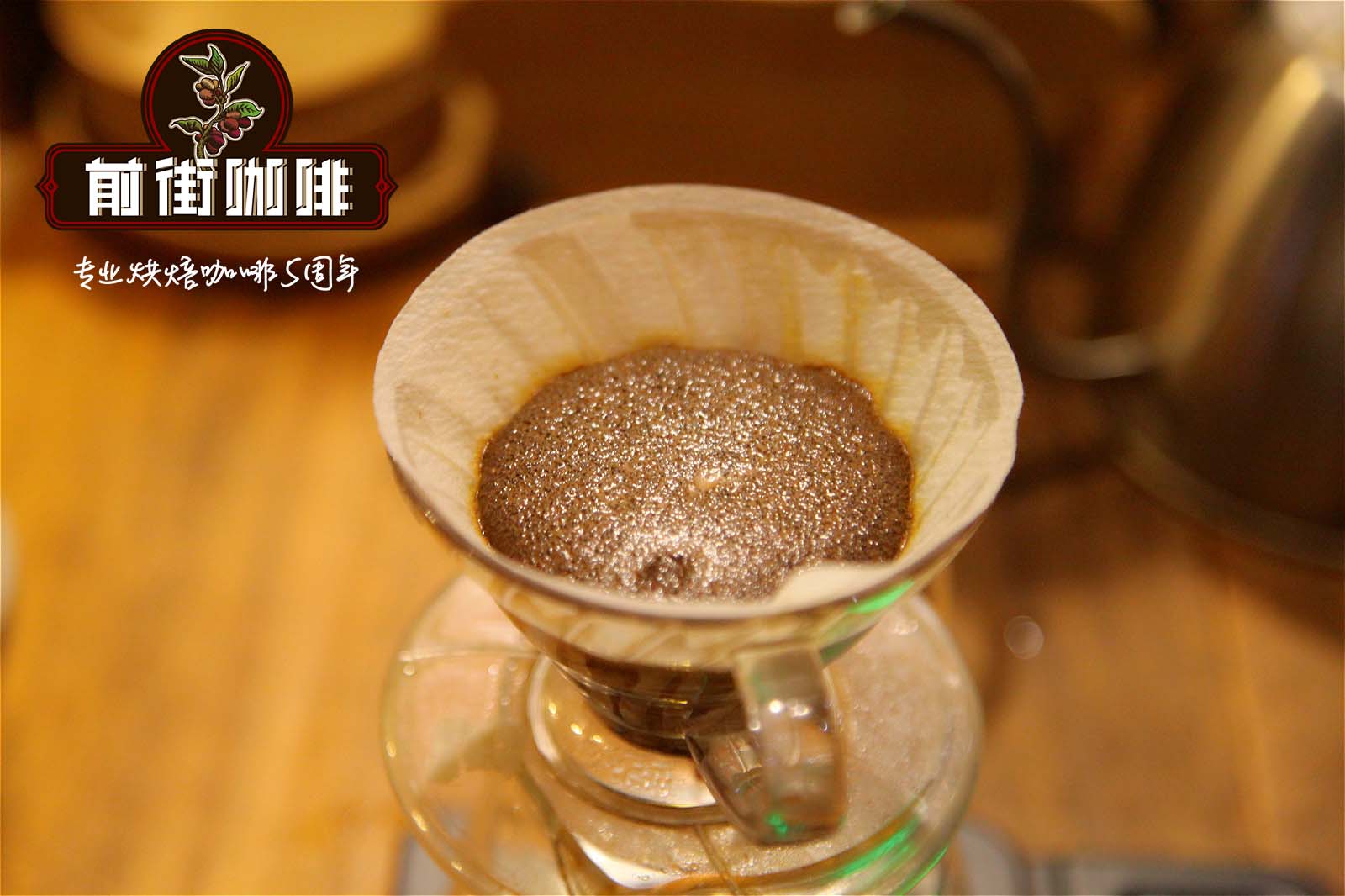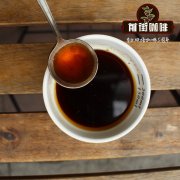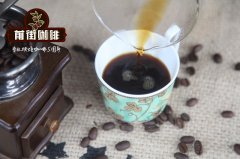What is the special place of Yunnan coffee beans?

Professional coffee knowledge exchange more coffee bean information please follow the coffee workshop (Wechat official account cafe_style)
Typica
Typica is one of the oldest native varieties in Ethiopia. Tibica's top leaves are bronzed and the beans are oval or thin in shape; elegant flavor, but weak physique, poor disease resistance and low fruit yield.
Typica is one of the oldest varieties of Arabica coffee discovered today, and the other is called bourbon. The Arabica species originated in Ethiopia, where it still grows naturally today in the highlands of the pristine rainforest. 13Murray was brought to Yemen in the 14th century, and tin pickups were planted in Hortus Botanicus, Amsterdam, around 1700. The Ironpickup saplings are the first saplings brought from the Dutch royal garden to Central and South America and the New World to be planted. Iron pickup is a pure precious tree species with oval fruit shape, brass leaves and varied fruit flavor.
The iron card species is one of the oldest Arabica tree species and has derived many other variants. The Ironpika bean is slender, the tree is tall, the fruit is oval, and the branches are slightly inclined. The four iron pickups are slender and open, with a tilt angle of 50 Murray 70 degrees. The coffee yield of each tree is very low, but the cup test score is very high.
Formerly known as Arabica Iron pickup, the Scottish regiment brought the tree to Kenya from Yemen and planted it with bronze leaves. The Hawaiian tin card was introduced from Guatemala and renamed Kona with a brass leaf tip. Due to geographical reasons, the iron pickups planted on other coffee belts in the world are different. Iron pickups have been genetically evolved, and many variants are more adaptable to the surrounding environment and produce new characteristics, which are generally considered to be new varieties, such as Typica in Mexico is slightly different from Typica in Hawaii, so they have different names: Criollo (South America), Arabigo (America), Kona (Hawaii), Pluma Hidalgo (Mexico). Garundang (Sumatra), Blue Mountain (Yomaiga, Papua New Guinea) S ã o Bernado & San Ram ó n (Brazil), Kent and Chickumalgu (India).
The leaf tip of the iron pickup species has a feature, which is red copper, which is called red top coffee. Coffee tree opposite leaves are long oval, smooth leaves, the end of the branch is very long, few branches, and the flowers are white, open at the base of the petiole connecting the branch. The ripe coffee berries look like cherries and are bright red with sweet flesh and contain a pair of seeds, namely coffee beans (Coffee Beans).
Iron pickup is the first coffee variety grown in the new world. The iron pickup planted in Java was a Dutch gift to Father Louis XIV of France and survived in Persian gardens. The seeds were brought to French Martinique by the French in 1720.
Iron pickup is the ancestor of many coffee derivatives. Like other Arabica tree species, the iron pickup has oval fruit and slightly inclined branches, and the tin card has 3.5 Murray 4 Michael, and the branch inclination is 50 Murray 70 degrees. The yield of the iron pickup is very low, but the cup test quality is very high.
Yunnan coffee iron pickup coffee beans
Typica: the shape is oval, and the bean body is thin from the side. even if the altitude of the planting area is different, the thickness of the side of the raw bean will not be too different.
Iron card species are most likely to be taken by Yemenis from Ethiopia to Malabar and India, and then to Indonesia by the Dutch. It was then brought from West India to the French colony of Martinique.
Subsequently, it grew in other planting areas and derived many variants: Criollo (South America), Arabigo (Central America), Kona (Hawaii), Pluma Hidalgo (Mexico), Garundang (Sumatra), Blue Mountain (Jamaica, Papua New Guinea), San Bernado & San Ramon (Brazil), Kents & Chickumalgu (India).
Yunnan Coffee Huaguo Mountain (Typica):
Baking degree: medium baking
Dried fragrance: pear fruits (pear-fruit), vanilla (vanila-like), honey (honey-like), peach tea (peach tea), ripe oranges (ripe orange), jasmine (jasmine hints)
Wet fragrance: nutty (nutty), milk chocolate (milky chocolate), herbs (herbal-floral)
Palate: supple in the mouth, aroma of Asian herbs, lively and bright sour taste, good balance between cheeks, soft acidity, mellow balance, rich layers, obvious taste of dark chocolate, honey and sucrose, brown sugar flavor after complete cooling.
Yunnan coffee recommended brewing methods: siphon, hand pulping
Degree of grinding: 4 (Fuji R440)
Water temperature: 90 °C
Other suggestions for trickling extraction:
Normal pressure, recommended grinding degree of 3.5-4 / water temperature 90 °C
Philharmonic pressure, recommended 2.5 grinding degree, water temperature 88 °C
Hand punch: 3.5 degree of grinding, water temperature 89 °C
Related recommendation: Yunnan small coffee beans how to brew Yunnan small coffee brand recommendation
Important Notice :
前街咖啡 FrontStreet Coffee has moved to new addredd:
FrontStreet Coffee Address: 315,Donghua East Road,GuangZhou
Tel:020 38364473
- Prev

Comparison between Kenyan Coffee and Yega Chuefei Coffee is the quality of Kenyan coffee better
For the exchange of professional baristas, please follow the coffee workshop (Wechat official account cafe_style) Kenyan coffee: Kenyan coffee is mostly grown at an altitude of 1500Murray 2100m and is harvested twice a year. Its main feature is a distinct fruit aroma, the common fruit aroma is citrus. Kenyan coffee has a multi-layered taste and acidity of fruit juice, perfect grapefruit and wine flavors.
- Next

Is Colombian Coffee of good quality? Colombian Coffee taste description
Communication of professional baristas Please pay attention to the coffee workshop (Wechat official account cafe_style) Colombian coffee quality: both in terms of yield and texture, Colombian coffee is produced by Medellin, which is characterized by full particles, rich nutrition, moderate acidity, good balance, rich aroma and soft taste. In addition to Medellin, two neighboring provinces in the south
Related
- Beginners will see the "Coffee pull flower" guide!
- What is the difference between ice blog purified milk and ordinary milk coffee?
- Why is the Philippines the largest producer of crops in Liberia?
- For coffee extraction, should the fine powder be retained?
- How does extracted espresso fill pressed powder? How much strength does it take to press the powder?
- How to make jasmine cold extract coffee? Is the jasmine + latte good?
- Will this little toy really make the coffee taste better? How does Lily Drip affect coffee extraction?
- Will the action of slapping the filter cup also affect coffee extraction?
- What's the difference between powder-to-water ratio and powder-to-liquid ratio?
- What is the Ethiopian local species? What does it have to do with Heirloom native species?

